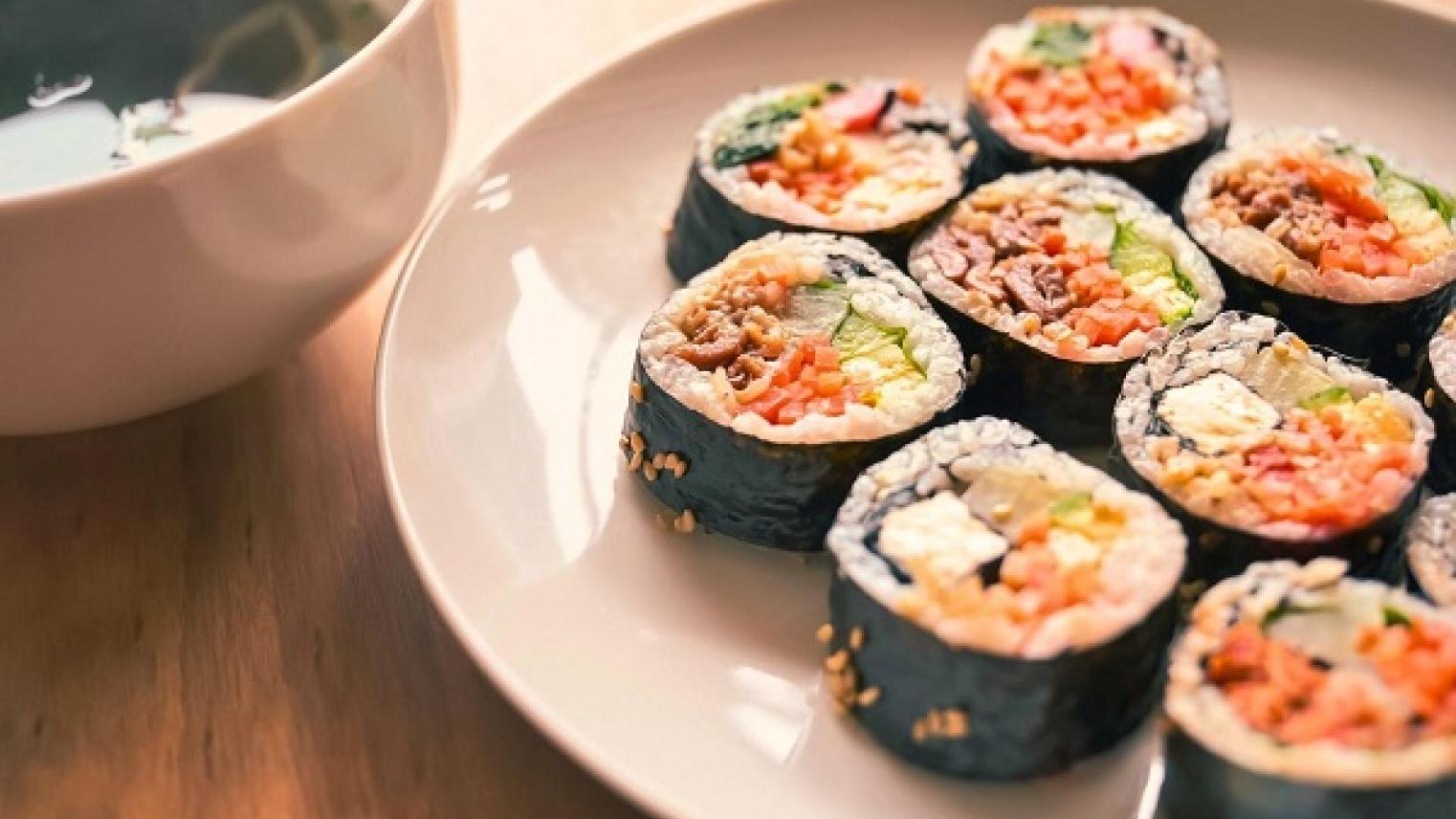A Savoury Delight Wrapped in Tradition: Presenting Korea’s Kimbap

At the heart of Korean cuisine lies a beloved culinary treasure known as kimbap—a delightful dish that marries flavours, textures, and tradition into a portable and satisfying roll. Often likened to Japanese sushi, kimbap offers a unique twist with its vibrant ingredients and hearty fillings, making it a favourite among Koreans and food enthusiasts worldwide.
A Bite of Heritage
Originating from Korea, kimbap (김밥) traces its roots back to the early 20th century, when it emerged as a convenient and nutritious meal for Koreans on the go. The name "kimbap" itself reflects its ingredients and preparation: "kim" refers to dried seaweed, while "bap" means rice. Traditionally, kimbap was crafted during picnics, family gatherings, and special occasions, where it served as a versatile and portable snack.
Beyond its culinary appeal, kimbap holds cultural significance in Korean society, symbolizing unity, generosity, and hospitality. It is often shared among family and friends as a gesture of warmth and camaraderie, reinforcing bonds and traditions that have been passed down through generations. Its presence at special occasions such as weddings, birthdays, and holidays underscores its role as a cherished part of Korean culinary heritage.
Crafting the Perfect Roll
In recent years, kimbap has gained popularity beyond Korea's borders, captivating food enthusiasts worldwide with its healthful ingredients and delicious flavours. Restaurants and food trucks in international cities offer their own interpretations of kimbap, adapting it to local tastes while retaining its essence as a wholesome and satisfying dish.
At the heart of kimbap is its filling, which varies depending on regional preferences and personal tastes. Typically, kimbap features seasoned rice as its base, mixed with ingredients such as pickled vegetables (usually radish or cucumber), strips of egg omelette, savory ham or sausage, and occasionally, cooked tuna or beef. The key to a flavourful kimbap lies in the balance of ingredients—each adding its own texture and taste to create a harmonious blend.
Crafting kimbap is as much an art form as it is a culinary skill. The process begins with a sheet of roasted seaweed, which is laid flat on a bamboo mat. A generous layer of seasoned rice is evenly spread over the seaweed, leaving a margin at the top and bottom for sealing. Next, a colourful array of fillings is carefully arranged along the centre of the rice, ensuring a balanced distribution of flavours with each bite. Using the bamboo mat as a guide, the kimbap is rolled tightly and compactly, creating a cylindrical shape that is then sliced into bite-sized pieces.
One of the joys of kimbap lies in its versatility and accessibility. Whether enjoyed as a quick snack, a light meal, or part of a festive spread, kimbap offers a satisfying blend of flavours and textures that appeal to all palates. Its portable nature makes it ideal for picnics, lunchboxes, and gatherings, where its colourful appearance and inviting aroma add to the dining experience.
Savouring a Culture
As a symbol of creativity, community, and culinary craftsmanship, kimbap continues to delight and inspire food lovers around the world. Whether enjoyed at a bustling street market in Seoul or savoured at a trendy café in New York City, kimbap invites everyone to experience the rich flavours and traditions of Korea with each flavourful bite.